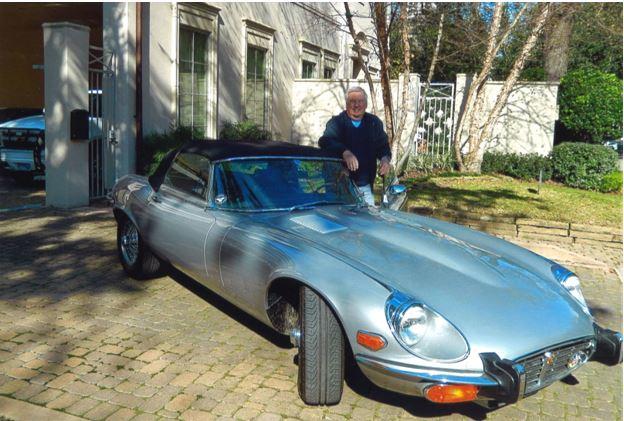By Ray Hankamer
Speaker: Bruce Rutherford, International Director JLL
TAKEAWAY: Houston office market will suffer extreme weakness in those submarkets
depending on the Energy Sector:
Your Marketing Source For Texas Commercial Real Estate Reaching 100,000+ QUALIFIED Commercial Real Estate Brokers, Investors, Developers & Commercial Service Providers
By Ray Hankamer
Speaker: Bruce Rutherford, International Director JLL
TAKEAWAY: Houston office market will suffer extreme weakness in those submarkets
depending on the Energy Sector:

BY RAY HANKAMER
By Ray Hankamer
RN: John, thanks for spending time with REDNews. Our readership is of all ages, and most are in Commercial Real Estate (CRE) in one way or another. Will you tell us how you got started in the lending business, and what your educational background was that prepared you for it?
JF: I received a BA in economics from the University of Texas at Austin in 1970, worked at Texas Commerce Bank for a year and then went to TCU and received an MBA. After graduating in 1972, I joined American General Investment Corp. ( now AIG) and have been in the commercial real estate finance business ever since.
RN: Did you specialize in your career in any of the segments of CRE lending, or did you provide financing for all of them?
JF: I have financed all property types (including a turtle farm!).
REDNews (RN): John, the Uptown Houston District is well under way constructing a new Post Oak Boulevard. Tell us about the project.
John Breeding (JRB): The Boulevard Project will build Post Oak Boulevard into an exquisitely designed grand boulevard all the while preserving existing automobile access, substantially improving transit service and creating a beautifully landscaped pedestrian environment. (For further details, see REDNews.com/uptown)
RN: I understand this project will include an exciting new regional transportation system using existing METRO Park and Ride and a new dedicated busway to provide comprehensive commuter service for the first time to employees in the Galleria-Uptown area. Can you tell us how this will work, and just which far suburbs will have a transit option to the Galleria-Uptown area for the first time?
JRB: We have a plan. Houston has an excellent commuter bus service on its highly successful HOV / busway network. This network effectively penetrates the heart of the suburban communities in which many of Uptown’s employees live. Communities in Katy, Cypress, Mission Bend, Fort Bend County and others. (Use blue map with park & ride lots) The Boulevard Project will get these employees to and from work using Houston’s bus way system. (For further details, see REDNews.com/uptown)
RN: So the innovative Boulevard Project will essentially be replacing what was originally intended to be the METRO light rail Uptown Line? What about the new Bellaire transit hub, just to the south of the Uptown District?
JRB: That is correct. METRO is in the midst of planning and building light rail lines around Houston. Uptown sits in line behind other projects that will be built first. It is unknown if or when the Uptown line could be built by METRO. In an effort to provide transit options to the employees of Uptown in the near term, our Board of Directors voted to build The Boulevard Project. The Bellaire / Uptown Transit Center will be built on the south end of this project. The Boulevard Project will tap into the existing Westpark Tollway and Southwest Freeway HOV lanes, allowing employees to use the Park and Ride lots along these corridors. (Transit Corridor map)
RN: When do you see the system beginning operation? How will the construction process be staged to minimize disruption in the area in the meantime?
JRB: We anticipate construction to be complete in late December 2018 with an operating date in early 2019. (For further details, see REDNews.com/uptown) construction. Southbound traffic will then be redirected onto the new (Construction segments graphic)
RN: How will this system serve employees and residents just inside the Loop and a few blocks west of Post Oak Boulevard who want to use it for both regional and local connectivity?
JRB: METRO’s new reimagining program is currently looking at providing better two-way peak and midday service on some corridors to support better connectivity with the local bus network and commute options. When the Boulevard Project is completed, we will have service that works with the local bus network providing the east / west connectivity and regionally with HOV network.
RN: John, I have heard Post Oak Boulevard called the “Park Avenue of Houston”. There are announcements which have been made recently of several significant new high-rise residential projects, and this will bring more pedestrian traffic to the area. Whole Foods is there anticipating this new “24-hour population”. Do you see future development trending more heavily to residential than office? It appears that The Boulevard Project will be busy serving not only commuters but a fast-increasing population of local residents, who should be able to move around to shop and dine without getting into an automobile.
JRB: One of the pleasant surprises of growth of our area is the residential product. I can see the time when the value of the residential market is equal to the office market. The opportunity for residents as well as workers in the area to move along Post Oak Boulevard without getting in their car will be yet another benefit of the Boulevard Project.